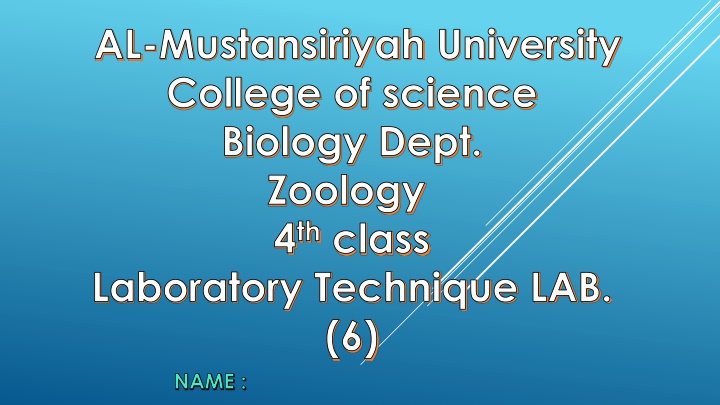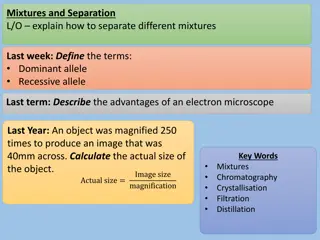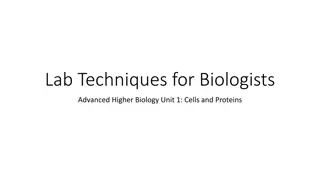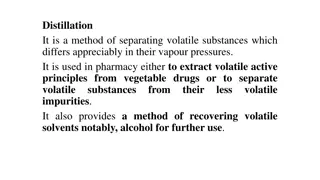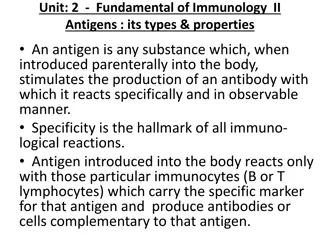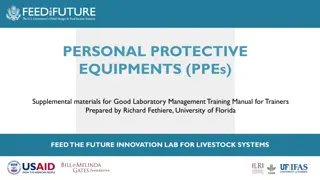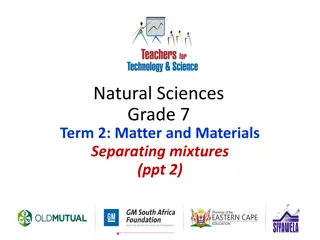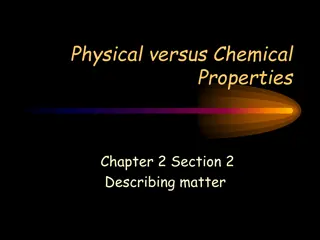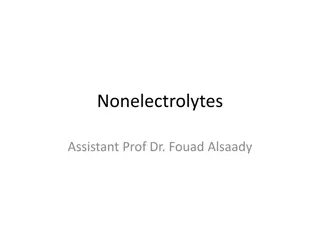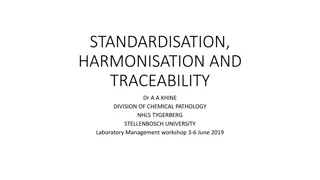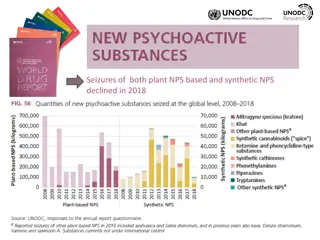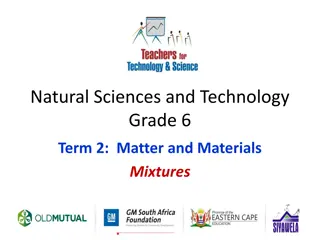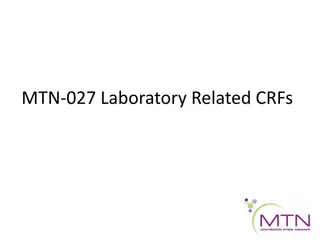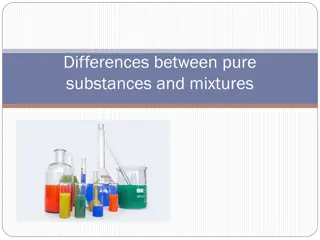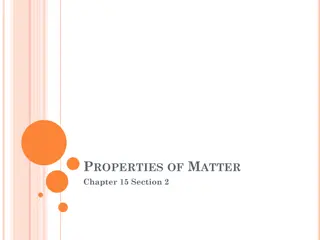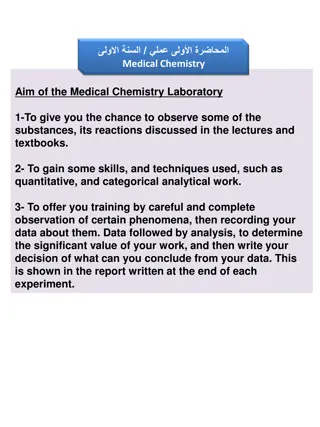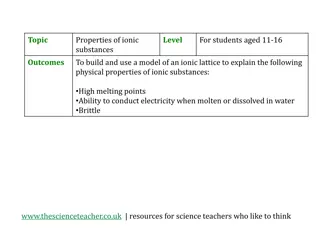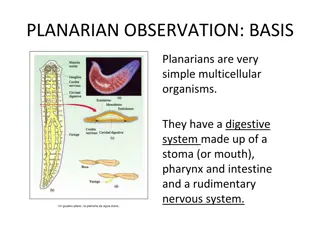Laboratory Techniques for Separating Substances Based on Physical Properties
This laboratory session at AL-Mustansiriyah University College of Science, Biology Department, Zoology class aims to provide hands-on experience with various techniques for separating different kinds of matter based on their physical properties. Students will explore methods such as distillation, filtration, chromatography, evaporation, decanting, and extraction. The practical applications of these separation techniques in industries like chemical, brewery, and pharmaceutical will also be highlighted. The session covers methodologies including chromatography, distillation, extraction, centrifugation, crystallization, sublimation, filtration, and decantation. Through this session, students will gain a deeper understanding of how substances can be effectively separated using distinct physical properties and processes.
Download Presentation

Please find below an Image/Link to download the presentation.
The content on the website is provided AS IS for your information and personal use only. It may not be sold, licensed, or shared on other websites without obtaining consent from the author.If you encounter any issues during the download, it is possible that the publisher has removed the file from their server.
You are allowed to download the files provided on this website for personal or commercial use, subject to the condition that they are used lawfully. All files are the property of their respective owners.
The content on the website is provided AS IS for your information and personal use only. It may not be sold, licensed, or shared on other websites without obtaining consent from the author.
E N D
Presentation Transcript
AL-Mustansiriyah University College of science Biology Dept. Zoology 4thclass Laboratory Technique LAB. (6) NAME :
PURPOSE THE MAIN PURPOSE OF THIS LAB IS TO GIVE YOU EXPERIENCE WITH TECHNIQUES FOR SEPARATING DIFFERENT KINDS OF MATTER BASED ON THEIR PHYSICAL PROPERTIES.
SEPARATION SUBSTANCES vary widely in their physical properties, so there are also a variety of separation techniques. a brief list includes: distillation, filtration, magnetic, chromatography, evaporation, decanting, and extraction.
Various Methods for Separating the Components of a Mixture Chromatography: separating components of a mixture that have differing adsorptive tendencies on a stationary phase as the mixture is passed over or through the stationary phase . Chromatography of plant pigments Distillation: Separation through vaporization of a liquid from a solid, or another liquid, followed by vapor condensation. Distillation is used in many different industries including chemical, brewery and pharmaceutical.
Extraction: removing a substance from a solid or liquid mixture by adding a solvent in which the substance is more soluble. Centrifugation: removing a substance from a solution by means of a centrifuge.
Crystallization: forming a crystalline solid by decreasing its solubility as a result of cooling the solution, evaporating the solvent, or adding a solvent in which the solid is less soluble such that solid crystals form. Sublimation of Iodine sublimation_iode aqua Sublimation: vaporizing a solid and subsequently condensing its vapor. insulin Crystals of insulin grown in space let scientists determine the vital enzyme's structure and linkages with much higher resolution than Earth-grown crystals. mineral aquamarine
Filtration: removing a solid substance from a liquid by passing the suspension through a filter. Crude oil filtration (vacuum filtration) Gravity Filtration Decantation: a process for separating the liquid component of a solid liquid mixture from the solid by pouring. decant Decanting whey from the curds in cheese making. Decanting a solvent from a solute.
Side arm or filtration flask A filtration flask looks like a flask with a short side arm. The "arm" is designed to connect the flask to a vacuum source. When sealed on the top with a stopper or a B chner funnel, the vacuum flask will maintain a reduced pressure.
Stemmed Funnel B chner Funnel Stemless Funnel A B chner funnel is the white porcelain funnel. It requires an adaptor or rubber stopper with a hole in it to connect it to the top of a filtration flask. A B chner funnel is used exclusively for vacuum filtrations.
